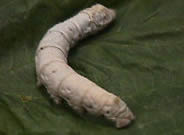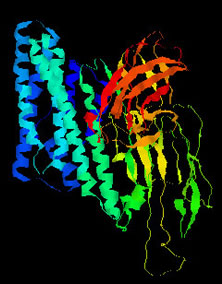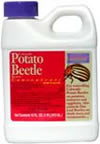 |
||||||||||||
 |
||||||||||||
History of Bt
 Japanese biologist, Shigetane Ishiwatari was investigating the cause of
the sotto disease (sudden-collapse disease) that was killing large populations
of silkworms when he first isolated the bacterium Bacillus thuringiensis
(Bt) as the cause of the disease in 1901.
Japanese biologist, Shigetane Ishiwatari was investigating the cause of
the sotto disease (sudden-collapse disease) that was killing large populations
of silkworms when he first isolated the bacterium Bacillus thuringiensis
(Bt) as the cause of the disease in 1901.
Ernst Berliner isolated a bacteria that had killed a Mediterranean flour moth in 1911, and rediscovered Bt. He named it Bacillus thuringiensis, after the German town Thuringia where the moth was found. Ishiwatari had named the bacterium Bacillus sotto in 1901 but the name was later ruled invalid. In 1915, Berliner reported the existance of a crystal within Bt, but the activity of this crystal was not discovered until much later.
Farmers started to use Bt as a pesticide in 1920. France soon started to make commericialized spore based formulations called Sporine in 1938. Sporine, at the time was used primarly to kill flour moths.
 More
products containing Bt were soon marketed, but many of these
products had limitations. Bt products such as sprays were rapidly
washed away by rain, and degraded under the sun's UV rays. Also, there
were many insects that are not susceptible to any of the limited number
of Bt strains known at the time. All the Bt strains
known at the time were toxic to lepidopteran (moth) larvae only. There
were also some insects that live within the plant or underground where
the Bt sprays could not reach. Since synthetic insecticides were
readily avaliable and often very efficient in killing insects, Bt
was not used widly.
More
products containing Bt were soon marketed, but many of these
products had limitations. Bt products such as sprays were rapidly
washed away by rain, and degraded under the sun's UV rays. Also, there
were many insects that are not susceptible to any of the limited number
of Bt strains known at the time. All the Bt strains
known at the time were toxic to lepidopteran (moth) larvae only. There
were also some insects that live within the plant or underground where
the Bt sprays could not reach. Since synthetic insecticides were
readily avaliable and often very efficient in killing insects, Bt
was not used widly.
 In
1956, researchers, Hannay, Fitz-James and Angus found that the main insecticidal
activity against lepidoteran (moth) insects was due to the parasporal
crystal. With this discovery came increased interest in the crystal structure,
biochemistry, and general mode of action of Bt. Research on Bt
began in ernest.
In
1956, researchers, Hannay, Fitz-James and Angus found that the main insecticidal
activity against lepidoteran (moth) insects was due to the parasporal
crystal. With this discovery came increased interest in the crystal structure,
biochemistry, and general mode of action of Bt. Research on Bt
began in ernest.
In the US, Bt was used commercially starting in 1958. By 1961, Bt was registerd as a pesticide to the EPA.
 Up
until 1977, only thirteen Bt strains had been described. All
thirteen subspecies were toxic only to certain species of lepidopteran
larvae. In 1977 the first subspecies toxic to dipteran (flies) species
was found, and the first discovery of subspecies toxic to species of coleopteran
(beetles) followed in 1983.
Up
until 1977, only thirteen Bt strains had been described. All
thirteen subspecies were toxic only to certain species of lepidopteran
larvae. In 1977 the first subspecies toxic to dipteran (flies) species
was found, and the first discovery of subspecies toxic to species of coleopteran
(beetles) followed in 1983.
In the 1980's use of Bt increased when insects became increasingly resistant to the synthetic insecticides and scientists and environmantalists became aware that the chemicals were harming the environment. Bt is organic and it affects specific insects and does not persist in the environment. Because of this, governments and private industries started to fund research on Bt.
Today, there are thousands of strains of Bt. Many of them encode unique toxic crystals.
With the advancement in molecular biology, it soon became feasible to move the gene that encodes the toxic crystals into a plant. The first genetically engineered plant, corn, was registered with the EPA in 1995